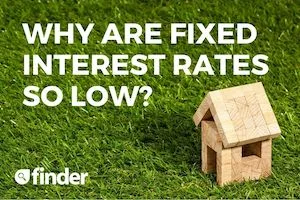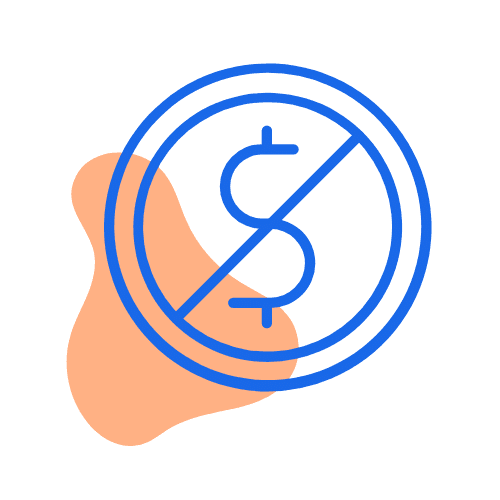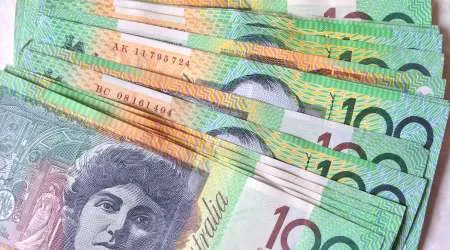
First homebuyer e-course
Sign up for our FREE 8-week course to get on the property ladder.

Most of the time, variable rate home loans are lower than fixed rate loans. But in the last few years the opposite has happened, with fixed rate loans becoming the lowest rates on the market.
This has come about because the two loan types are funded differently. Also, when lenders start setting fixed rates lower than variable rates, they're essentially betting that variable rates will remain low for some time.
That's the short answer. But the long answer is more complicated.
When the Reserve Bank of Australia (RBA) makes a change to the official cash rate, whether it's an increase or decrease, most home loan customers expect mortgage interest rates to change as well.
In recent years, banks and lenders have been reluctant to cut variable rate home loans in line with RBA rate changes, because their profit margins have been squeezed. However, they have made aggressive cuts to fixed rate home loans.
In fact, an analysis of Finder’s database shows the average standard variable rate has been consistently more expensive than fixed rate loans, from 1- to 5-year fixed rate periods, since the end of 2019.
So what causes fixed rates to become less expensive than variable rates? The answer lies in how these different types of loans are funded.
Fixed rates are funded by global bond markets. This means banks secure funding by selling debt in overseas markets. Fixed rate loans are generally tied to longer-term debt instruments, which usually carry higher interest rates.
The sophisticated investors who are pricing bond markets are betting about the state of the economy in the future compared to today: whether it will be better or worse.
On the other hand, variable rates are largely pegged to the RBA's official cash rate, which is the amount the Reserve Bank charges banks for overnight loans. The official cash rate currently sits at 0.10%, the lowest it has been in decades.
Fixed rates essentially reflect what the market believes will happen to the official cash rate (and by extension, the standard variable rate) in the future. If the market anticipates that the official cash rate will rise, fixed rates become more expensive, because lenders assume variable rates are likely to rise in the future. If the market believes the official cash rate (and hence variable rates) will fall in the future, fixed rates become less expensive than variable rates.
| Response | |
|---|---|
| 3-4 yrs | 18.08% |
| Less than 1 year | 17.54% |
| 1-2 yrs | 17% |
| 5-8 yrs | 16.46% |
| 16 yrs or more | 15.91% |
| 9-15 yrs | 15.01% |
A yield curve is a graph that compares the yield, or interest rate, of particular securities that have the same credit quality, but that mature (or end) on different dates. In other words, a yield curve might compare the yield from a 90-day bank bill to a 10-year bond.
In normal circumstances, the 10-year bond would have a higher yield, which means a yield curve would appear like an upward slope, where the yield rises as the date of maturity lengthens.
However, in some circumstances, longer-term debt instruments become lower-yielding than short-term instruments. This happens when the market assumes that yields, or interest rates, are going to fall in the longer term. When this happens, it’s known as an inverted yield curve.
An inverted yield curve is often cited as a reason for fixed rates falling below variable rates.
It indicates that the market believes rates will be lower in the future than they are now, meaning long-term debt that backs fixed rates becomes cheaper for banks than short-term debt that backs variable rates.
When an inverted yield curve occurs, it can represent a good opportunity to fix your loan. It means that fixed rates have become less expensive than variable rates, because banks are able to raise long-term funding for less money than it costs them for short-term funding.
The downside to this is that an inverted yield curve is often the precursor to a recession, which is exactly what happened in Australia in 2020. The inverted yield curve indicates that the bond market is betting that the economy will deteriorate, causing official cash rates to fall. Right now, the official cash rate is just 0.10%, which leaves very little room for the RBA to make any meaningful further cuts.
Australia has seen several inverted yield curves in the past decade:
With all of this context, should you choose to fix your home loan interest rate when fixed rates are so much lower than variable rates?
The answer to this depends on your individual circumstances, but a good place to start is working out what your goals and plans are.
When deciding whether to fix your rate or not, don't try to "beat the market", because it rarely works. Instead, consider what your goals are and whether a fixed rate might suit you.
On the plus side, in the current market, a fixed rate loan:
It's important to also consider the potential risks of a fixed rate loan, and these include:
The best reason to lock in your rate is repayment certainty. When fixed rates become less expensive than variable rates, you can lock in a rate that you know you’ll be comfortable repaying for a set period of time.
And right now, choosing to fix your loan could save you money.
Say you have a loan worth $500,000 and you're paying 2.69% on a variable rate loan. Your home loan repayment currently sits at around $2,025 per month, or $467 per week.
If you fixed your loan at 1.99% for 2 years, your home loan repayment drops to $1,845 per month, or just $426 per week. This is an instant saving of a couple of thousand dollars per year, and you'll have the peace of mind of knowing your repayments will remain the same, regardless of what happens to your bank's standard variable rate or the broader economy.
Sound like a plan? Compare the latest fixed and variable rate home loans below.




Chris Gray takes us through four things people get wrong when buying property.
Auction expert Damien Cooley gives the lowdown on why property auctions are the best way to sell right now.
Richard Holden from UNSW Business School delves into Australian home loan sizes and rate cuts
We can't make clear predictions about Sydney's property market, but here's what the data suggests.
Designbx's Kerena Berry on how to give your interior design a professional look.
There's profit to be made in renovating your home, but don't jeopardise your insurance when you do.
We compared what $500,000 will buy you in Australia vs 13 global markets to see which gets you the most bang for your buck.
Working out how interest is calculated on a home loan can help you determine your repayment capabilities and how to pay it off sooner.
Australians are now drinking less than we previously were. Find out how you could save $40,000 by simply not drinking alcohol.
What is an offset account? It can save you thousands in interest and help you own your home sooner.

Sign up for our FREE 8-week course to get on the property ladder.

Get a home loan with a low deposit.

Pay less for your home loan with a super-low interest rate.

Save on your investment loan with these hot offers.
Why are the comparison rates on present fixed rates lower than the flat fixed rate itself? That is, when the fees associated with a loan are added to the initial loan rate, the Comparison should be higher, not lower.
Hi Thomas,
In most cases, the comparison rate is higher than the fixed rate when fees are taken into account. However, the comparison rate can be lower. On a fixed rate loan, this is usually because the loan reverts to a lower variable rate after the fixed period ends. Taking that into consideration, the comparison rate ends up being lower.
I hope this helps.
Cheers,
Richard